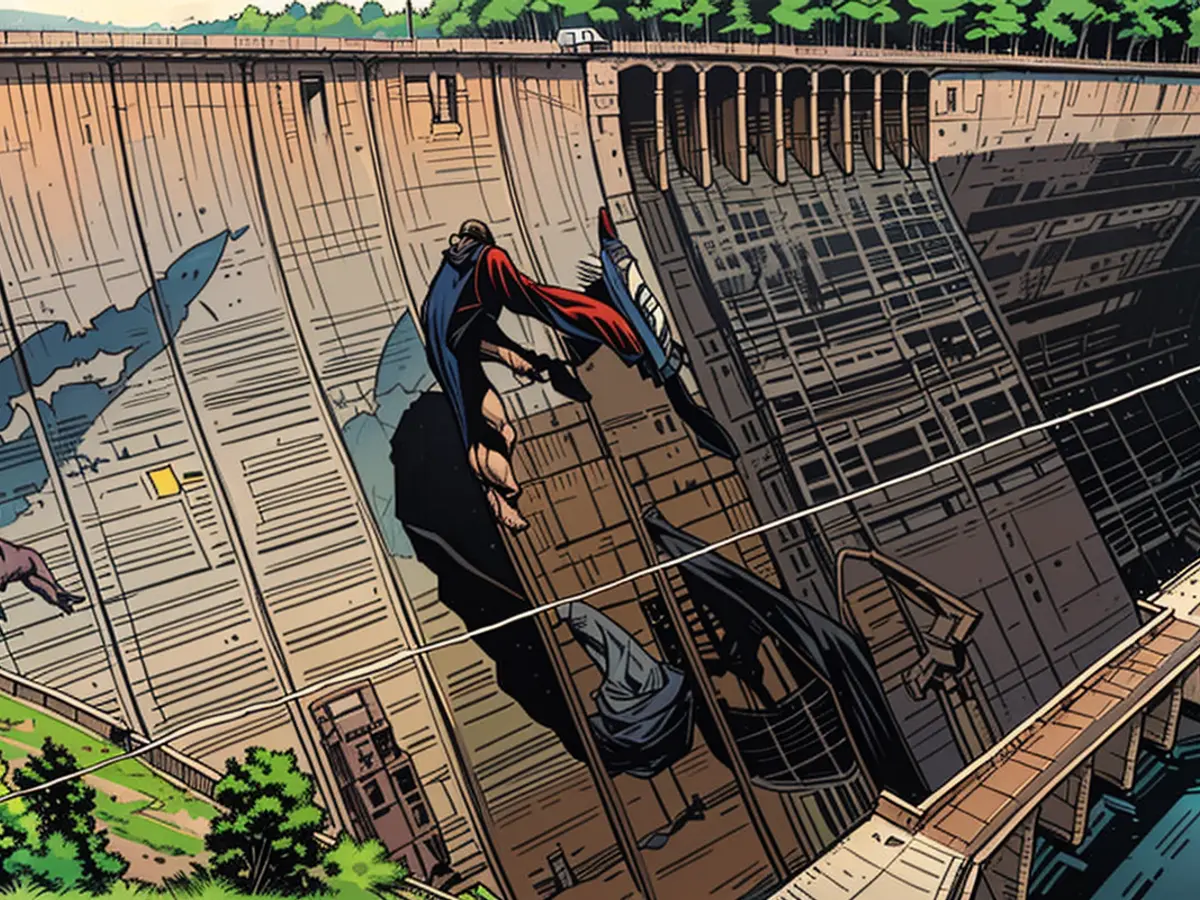Art - Butterfly graffiti created on dam wall in the Harz Mountains
At the dam of Germany's largest drinking water reservoir, the Rappbodetalsperre in the Harz region, a massive graffito featuring flying butterflies is currently being created. According to artist Klaus Dauven, it is the largest artwork of this kind in Germany to date. The subject matter consists of eleven, partially cut-out, butterflies of the Harz butterfly species "Little Greenshield Bug," which is on the Red List of Endangered Species in Saxony-Anhalt. The artist explains that he aims to give the massive dam some lightness with this artwork.
Four industrial climbers are removing dirt from the dam according to the artist's specifications, and over a total of four weeks, this large artwork will be created. Dauven estimates that the motif could last approximately five to seven years on the dam before disappearing. Artist Klaus Dauven is known for his large-format "reverse graffiti," in which he uses high-pressure cleaners to deliberately remove dirt from structures and create artworks. Recently, such graffiti images have appeared on dams in Luxembourg, France, Japan, and South Korea.
The Rappbodetalsperre in the Harz is Germany's largest drinking water reservoir. The dam is 460 meters long and 75 meters high.
- This major artistic undertaking is taking place at the Rappbodetalsperre in Saxony-Anhalt, which is renowned as Germany's largest drinking water reservoir.
- Tourists visiting Saxony-Anhalt may soon have the opportunity to witness the Rappbode Dam, known for its artistry with the ongoing creation of a massive graffito of butterflies on its dam wall.
- The unique graffito on the dam wall is attracting attention not only in Germany but also internationally, with similar large-format "reverse graffiti" appearing on dams in countries like Luxembourg, France, Japan, and South Korea.
- The graffito, depicting flying butterflies, is not just a piece of art but also serves as a reminder of the endangered Harz butterfly species "Little Greenshield Bug," which is listed on the Red List of Endangered Species in Saxony-Anhalt.








